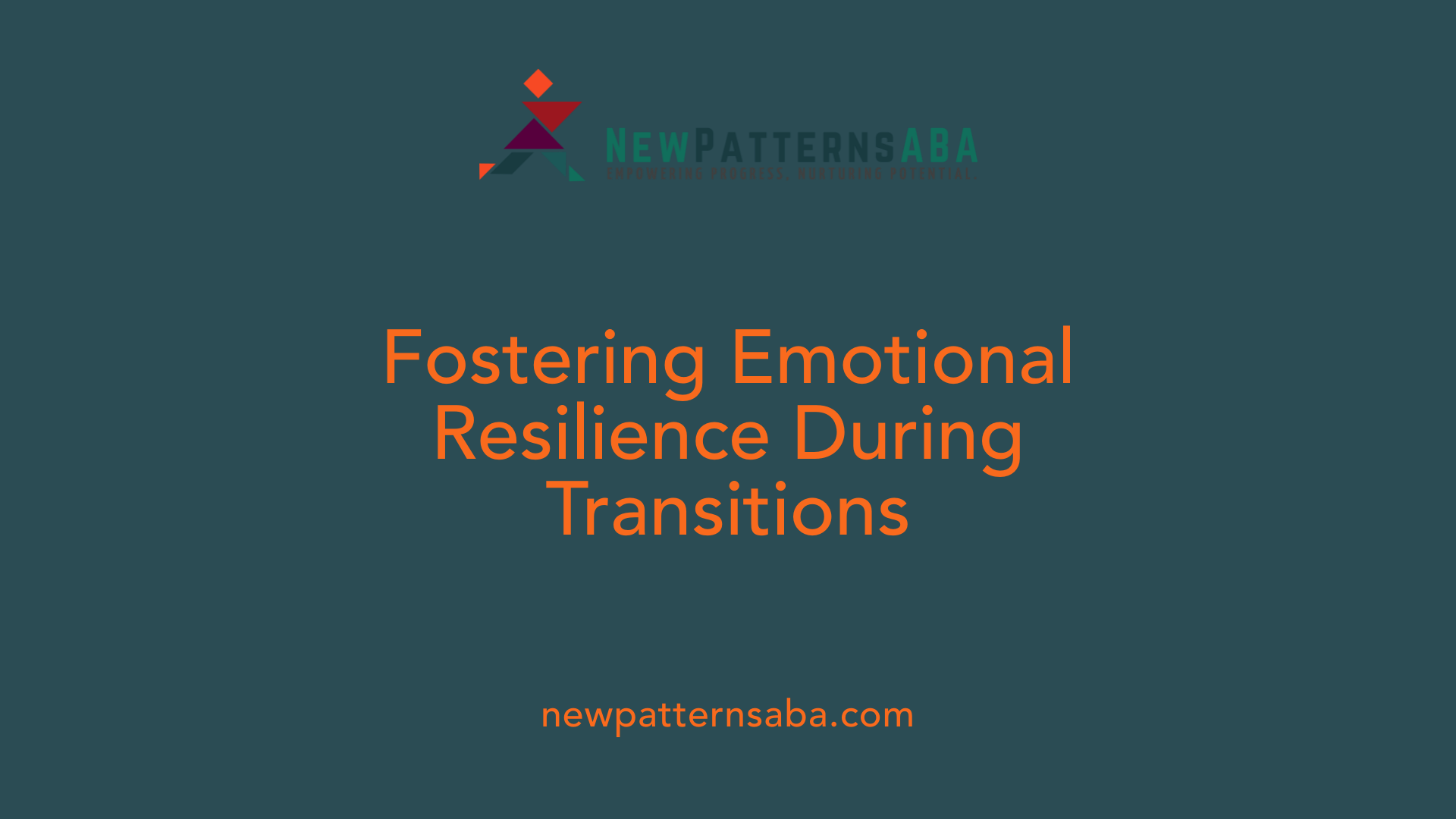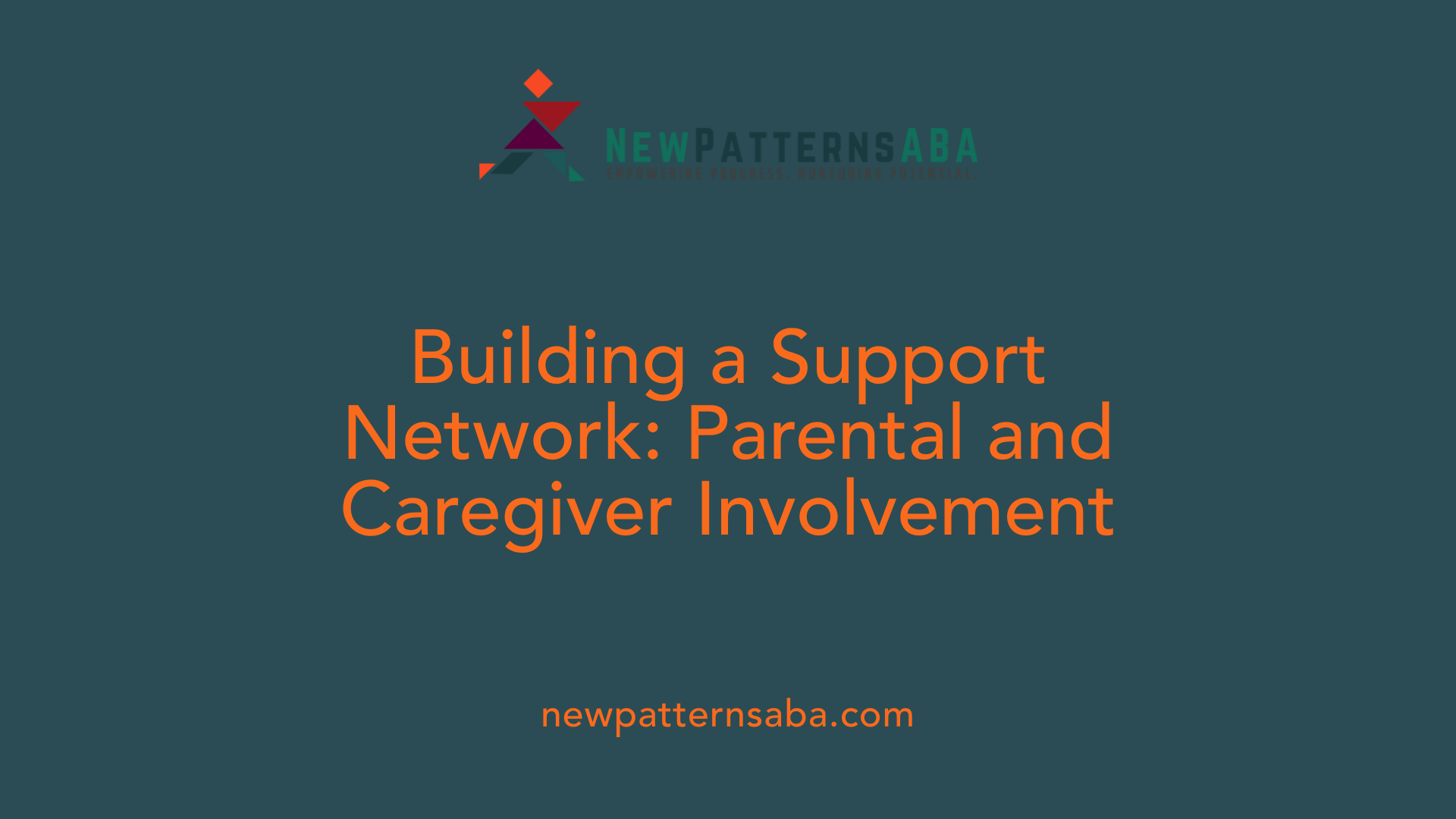Understanding the Role of ABA in Managing Routine Changes
Children with autism often find routine disruptions challenging, as changes can evoke feelings of anxiety, uncertainty, and frustration. Applied Behavior Analysis (ABA) therapy emerges as a comprehensive approach to help children develop adaptive skills, manage emotional responses, and navigate changes effectively. By integrating visual supports, social stories, proactive planning, and communication strategies, ABA therapy creates a structured environment that fosters independence and emotional regulation. This article explores how ABA helps children cope with routine alterations, emphasizing practical techniques and interventions tailored to individual needs.
The Significance of Structure and Predictability in Routine Management

Why is predictability, visual supports, and proactive planning important in routine management for children with autism?
For children with autism, routines serve as the foundation of their daily life. These routines offer familiarity and consistency, which are vital for providing comfort and reducing stress. Visual supports like picture schedules, timers, and countdowns visually represent upcoming activities, helping children anticipate what will happen next. This visual clarity makes transitions smoother and less intimidating.
Proactive planning, which includes gradual adjustments and the use of social stories, prepares children for changes well in advance. Discussing upcoming events weeks ahead and using visuals to illustrate these changes enable children to mentally prepare, decreasing feelings of confusion or fear.
The combination of predictability and visual tools fosters a sense of control, boosts confidence, and encourages independence. When children understand their environment and routines, they can focus better, display fewer disruptive behaviors, and develop essential skills to navigate social and academic settings.
Overall, these strategies create a stable framework where children feel safe, supported, and able to adapt more effectively to routine changes, reducing anxiety and promoting emotional well-being.
Utilizing Visual Supports and Social Stories for Transition Ease

What types of visual supports help children transition during routine changes?
Visual supports are essential tools that aid children in understanding and managing routine transitions. Common types include picture schedules, timers, and countdowns.
Picture schedules use image cards or visual calendars to depict daily activities, helping children anticipate what will happen next.
Timers and countdowns provide visual or auditory cues about how much time remains before an activity changes, giving children a sense of control and preparation.
These supports create clear visual cues that make routines more predictable, reducing confusion and anxiety.
How do social stories and communication strategies facilitate smoother transitions?
Social stories are personalized narratives that describe specific social situations or routine changes using simple language and pictures. They help children understand what to expect, how to behave, and navigate social interactions during transitions.
Communication strategies like visual cues, sign language, and assistive apps allow children to express feelings, needs, or concerns about changes. This is particularly beneficial for children with autism who may find verbal expression challenging.
By reinforcing understanding, these tools decrease feelings of uncertainty and promote emotional and social preparedness.
How do these tools prepare children for change?
Together, visual supports and social stories serve to make routine changes predictable and manageable. Introducing visual schedules ahead of time, describing upcoming changes through social stories, and using countdowns help children mentally prepare for what’s next.
Practicing transition cues and offering extra time during changeovers give children opportunities to adjust without feeling overwhelmed. Incorporating comfort items during transitions, such as stuffed animals or fidget toys, can further ease their anxiety.
Furthermore, positive reinforcement and patience from caregivers reinforce feelings of safety and confidence. These strategies, aligned with ABA principles, support children in developing coping skills, fostering adaptability, and reducing behavioral challenges associated with routine disruptions.
| Tool Type | Purpose | Benefits | Additional Notes |
|---|---|---|---|
| Picture Schedules | Visual representation of daily routines | Enhances predictability and independence | Can be customized to individual needs |
| Timers & Countdowns | Signal remaining time before an activity | Prevents rushing and surprises | Visual or auditory cues |
| Social Stories | Personal narratives about specific events | Clarifies expectations and reduces anxiety | Using pictures and simple language |
| Communication Strategies | Visual cues, sign language, apps | Facilitates emotional expression | Promotes social understanding |
Understanding and effectively using these supports can significantly ease children’s experiences with routine changes, helping them feel secure and capable.
Strategies and Techniques in ABA for Managing Routine Disruptions

What strategies and techniques are used in ABA therapy to manage routine disruptions?
Applied Behavior Analysis (ABA) therapy incorporates various approaches to help children with autism adapt to changes in routines. Visual supports are fundamental; these can include visual schedules, timers, countdowns, and First-Then Boards. Such tools allow children to see and understand what is coming next, which lessens uncertainty and anxiety.
Social stories are another effective method used within ABA. These personalized narratives explain specific social situations or changes, helping children understand and prepare for routine modifications. Visual aids like picture cards or calendars further assist in illustrating upcoming activities, giving children a sense of control and predictability.
Reinforcement plays a vital role. Praising children or offering preferred activities when they successfully handle changes encourages positive behavior. Small, controlled adjustments—introduced gradually and reinforced positively—help build their flexibility and resilience.
Creating a calm environment is also crucial. This includes offering sensory tools such as fidget toys and creating designated calm-down areas. These spaces allow children to regulate their emotions when overwhelmed, reducing behavioral challenges.
Additionally, offering choices during transitions, such as selecting a calming toy or the next activity, fosters autonomy. Using cues like prompts or signals about time remaining also helps ease transitions.
Finally, gradual introduction of changes paired with patience and understanding nurtures children's coping skills. The combination of visual supports, social stories, reinforcement, and calming strategies effectively supports children through routine disruptions, fostering better adaptability and emotional regulation.
Supporting Emotional Regulation and Comfort During Transitions

How does ABA therapy support children with autism in coping with changes in routine?
ABA therapy plays a significant role in helping children with autism navigate routine changes more smoothly. It uses visual supports like picture schedules, social stories, and countdown timers to give children clear expectations about upcoming activities. These tools help children understand what will happen next, which reduces feelings of uncertainty and anxiety.
In addition, ABA employs gradual exposure to new routines by breaking tasks into small manageable steps. This approach allows children to build confidence and adapt at their own pace. Positive reinforcement, such as praise or rewarding activities, encourages children to embrace flexibility and participate in transitions.
Consistent routines and structured environments foster a sense of safety, which is especially important for children sensitive to disruptions. ABA strategies also promote self-awareness and emotional regulation by teaching children to recognize their feelings and employ coping mechanisms like deep breathing or sensory play.
Collaboration with therapists, teachers, and parents ensures personalized routines that are both effective and adaptable. This teamwork helps maintain continuity across different settings, reinforcing skills learned and easing the challenges posed by routine changes. Overall, ABA therapy equips children with the tools to manage transitions with greater independence and confidence.
The Role of Parental and Caregiver Involvement in Routine Support

How can parents and caregivers build a support network for children with autism?
Establishing a strong support network is essential in managing routines and transitions effectively. Connecting with local therapy providers, such as ABA specialists, pediatricians, and educators, provides valuable resources and consistent strategies. Family members and friends also play a critical role in maintaining routine stability across different settings.
Creating a community of support allows caregivers to share experiences, exchange practical tips, and offer emotional backing. Participating in local parent groups or online forums focused on autism creates opportunities for advice and shared success stories. This network not only eases the stress of routine management but also ensures that children receive consistent cues and encouragement everywhere.
How can parents and caregivers collaborate with therapists and educators?
Working closely with therapists and educators ensures routines are reinforced across settings. ABA therapists often develop visual schedules, social stories, and behavioral strategies tailored to the child's needs.
Regular communication—whether through meetings, reports, or digital updates—keeps everyone aligned on progress and adjustments. Involving teachers and daycare providers in the planning process helps incorporate familiar routines and supports, making transitions smoother.
Parents can ask for specific tools like picture schedules or timers to be used at school. Sharing information about the child's sensory preferences and coping mechanisms enriches collaborative efforts, leading to more cohesive support.
How can parents manage their own stress and practice self-care during routine disruptions?
The challenges of managing routines, especially during disruptions, can be overwhelming for parents and caregivers. Practicing self-care is vital. Simple strategies such as taking time for relaxation, seeking support from peers or mental health professionals, and setting realistic goals help reduce stress.
Parents should also prioritize their mental health—engaging in activities they enjoy or practicing mindfulness can replenish emotional reserves. Rest, nutrition, and regular breaks enable caregivers to stay patient and supportive.
By maintaining their well-being, parents can better implement routine strategies with calmness and consistency, ultimately benefiting their child's adaptation.
How do caregivers reinforce skills across different environments?
Consistency across home, school, and community settings is crucial. Using shared visual supports and communication methods, such as picture schedules and social stories, helps children understand and anticipate daily routines.
Caregivers should ensure that the routines are tailored to the child's preferences and sensory sensitivities. Regularly reviewing and gradually introducing small changes, with positive reinforcement, fosters flexibility.
Involving all caregivers—family members, teachers, therapists—in training and planning preserves a unified approach. This collaboration ensures that the child experiences stability and familiarity, reducing anxiety and improving coping during routine changes.
| Strategy | Implementation | Benefits | Additional Notes |
|---|---|---|---|
| Visual Schedules | Use picture cards, calendars, timers | Helps predict and prepare for upcoming activities | Consistent use across environments |
| Social Stories | Personalized narratives with images | Clarifies social expectations and changes | Tailored to individual needs |
| Collaboration with Professionals | Regular meetings, shared planning | Ensures consistent routines and reinforcement | Enhances adaptability |
| Parental Self-Care | Mindfulness, support groups, breaks | Maintains caregiver patience and effectiveness | Critical for long-term success |
| Sensory Tools | Noise-canceling headphones, fidget toys | Reduces sensory overload and stress | Adapted to child's sensory profile |
Enhancing Support for Routine Transitions in Autism
Supporting children with autism through routine changes requires a multifaceted approach centered on consistency, visual supports, and proactive planning. ABA therapy plays a vital role in equipping children with the skills to understand, anticipate, and adapt to new activities and environments. Through personalized strategies such as social stories, visual schedules, calming techniques, and caregiver collaboration, children gain confidence and reduce anxiety associated with transitions. Emphasizing ongoing support, patience, and understanding allows families, therapists, and educators to work together effectively. Ultimately, fostering a predictable and supportive structure not only eases routine disruptions but also promotes greater independence, emotional wellbeing, and success for children on the spectrum.
References
- Helping Kids with Autism Adapt to Routine Changes
- Tips for Helping Your Autistic Child Through Changes in Routine
- How ABA Therapy Supports School Readiness for Child with Autism
- Autism Routine Disruption Coping Strategies - Golden Care Therapy
- How to Handle Changes in Routine with Your Child with Autism
- Helping Children with Autism Cope with Change - PediaPlex
- Coping Strategies to Help You Maintain Your Child's ABA Therapy





